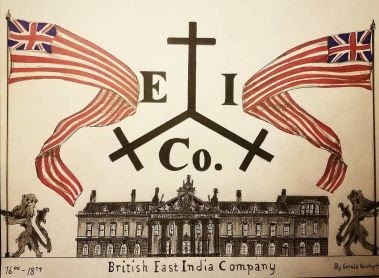Think Google or Apple are powerful? Nothing compared to British East India Company. A profit-making enterprise so mighty, it once ruled nearly all of the Indian subcontinent. Between 1600 and 1874, it built the most powerful corporation the world had ever known. It had its own army, own territory, and a near-total hold on trade of a product - tea.
At the dawn of the 17th century, the Indian subcontinent was known as the “East Indies,” -home to spices, fabrics, and luxury goods prized by wealthy Europeans. Due to their seafaring prowess, Spain and Portugal held a monopoly on trade in the Far East. But Britain wanted in, and when it seized the ships of the defeated Spanish Armada in 1588, it paved the way for the monarchy to become a serious naval power.
Source: https://comeawayfromshadows.com
In 1600, a group of English businessmen asked Elizabeth I for a royal charter that would let them voyage to the East Indies on behalf of the crown in exchange for a monopoly on trade. The merchants put up nearly 70,000 pounds of their own money to finance the venture, and the British East India Company was born.
The corporation relied on a “factory” system, leaving representatives it called “factors” behind to set up trading posts. They were allowed to source and negotiate for goods. Thanks to a treaty in 1613 with the Mughal emperor Jahangir, it established its first factory in Surat in what is now western India. Over the years, the company shifted its attention from pepper and other spices to calico and silk fabric and eventually tea. Also, it expanded into the Persian Gulf, China, and elsewhere in Asia.
The British East India Company’s royal charter gave it the ability to “wage war”. Initially it used military force to protect itself and fight rival traders. In 1757, however, it seized control of the entire Mughal state of Bengal. Robert Clive, who led the company’s 3,000-person army, became Bengal’s governor and began collecting taxes. This was then used to purchase Indian goods and export them to England. The company then built on its victory and drove the French and Dutch out of the Indian subcontinent.
In the years that followed, the British East India company annexed forcibly other regions of the subcontinent and forged alliances with rulers of territory they could not conquer. At its height, it had an army of 260,000 (twice the size of Britain’s standing army) and was responsible for almost half of Britain’s trade. The subcontinent was now under the rule of the British East India Company’s shareholders, who elected "merchant-statesmen" each year to dictate policy within its territory.
But financial woes and a widespread awareness of the company’s abuses of power eventually led Britain to seek direct control of the British East India Company. In 1858, after a long wind down, the British government finally ended company’s rule in India. By 1874, the company was a shell of its former self and was dissolved.
By then, the British East India Company had been involved in everything from getting China hooked on opium (the Company grew opium in India, then illegally exported it to China in exchange for coveted Chinese goods) to the international slave trade.
And many MNCs want to behave similarly when negotiating with less developed countries on energy, mining, pharmaceuticals, electronics and other modern-day products. The exception is they may not have an army but will engage a contractor, if need be.
Reference:
How the East India Company became the world’s most powerful business, Byerin Blackmore, September 6, 2019, https://www.nationalgeographic.com

No comments:
Post a Comment